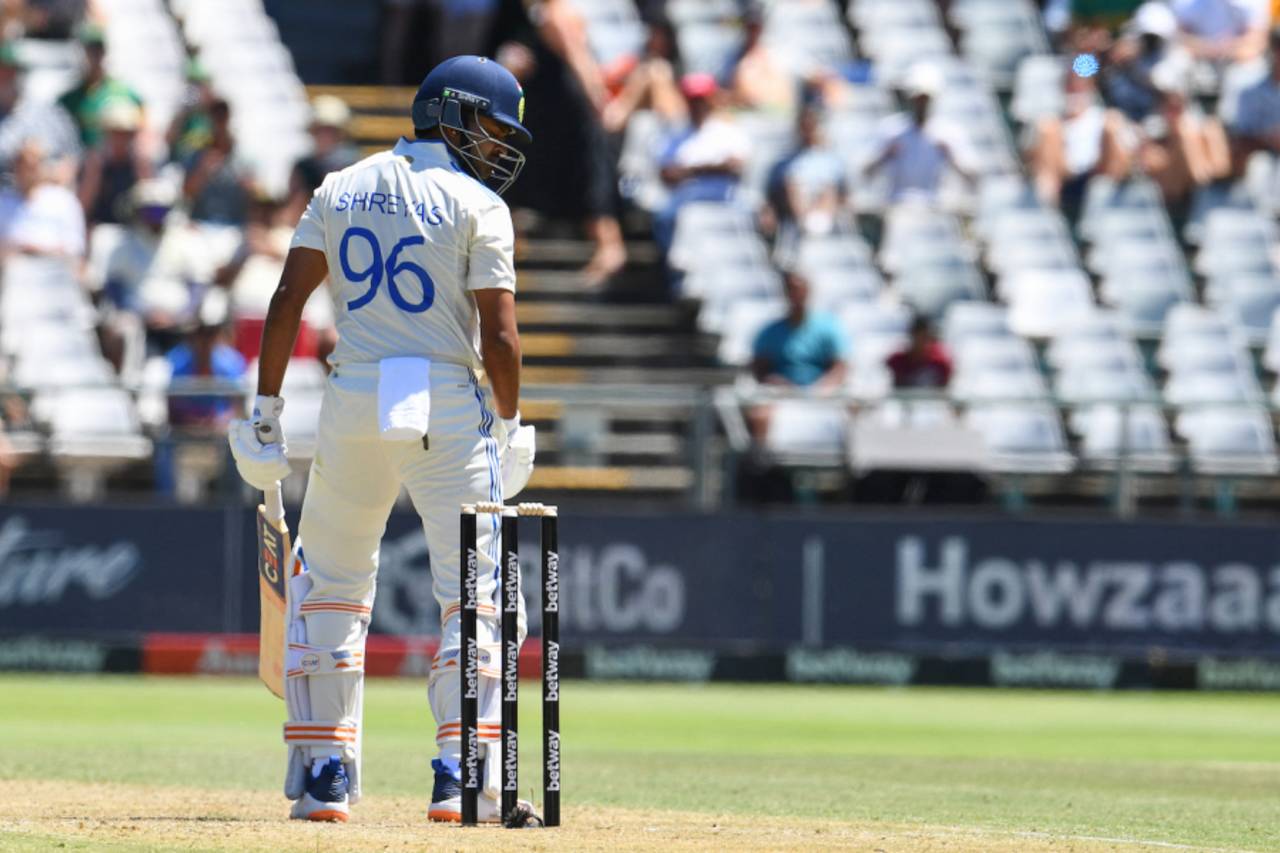Was the India-South Africa Test in Cape Town really the shortest of all time?
And has any team had a worse collapse than India did in their first innings?

No other team has ever lost six wickets for no runs in a Test innings as India did against South Africa at Newlands • AFP/Getty Images
South Africa's recent match against India in Cape Town lasted just 642 legal balls, which is indeed the shortest on record among Tests with a positive result. The previous-shortest, at 656, was a strange encounter in Melbourne in 1931-32, most of which took place on a badly rain-affected pitch - what used to be known in Australia as "a sticky dog".
The short answer is no: India's slide at Newlands was the first time a team had ever lost six wickets for no runs in a Test. There had previously been four collapses of five for nought. In one of those, against Pakistan in Rawalpindi in 1964-65, New Zealand lost six for one (the previous record) and seven for two in lurching from 57 for 2 to 59 for 9.
When he was out for 106, Aiden Markram had made 65.43% of South Africa's runs, which would have placed him third on the list of the highest percentages of a completed Test innings, which is still headed by the Australian Charles Bannerman's 67.34% (165 retired hurt out of a total of 245) in the very first Test of all, against England in Melbourne in 1876-77.

South Africa's rapid decline to 55 all out - the lowest total against India in any Test, undercutting New Zealand's 62 in Mumbai in 2021-22 - was the eighth time a team has been bowled out before lunch on the first day of a Test match.
You're right that the next-highest score after Aiden Markram's 106 in Cape Town was 12, by his opening partner Dean Elgar. That was indeed a record: previously the second-highest score in a Test innings in which someone scored a century was 13, also for South Africa, by Gary Kirsten and Mark Boucher against Sri Lanka in Centurion in 1997-98, in an innings in which Daryll Cullinan made 103. And when the underrated Australian Graham Yallop made 121 against England in Sydney in 1978-79, the next-highest score was Kim Hughes' 16.
Steven Lynch is the editor of the updated edition of Wisden on the Ashes